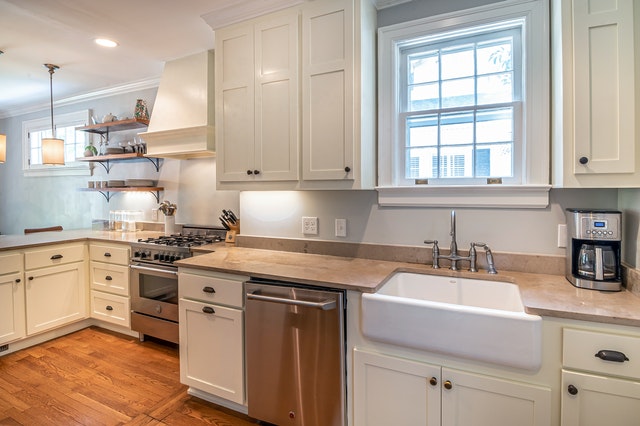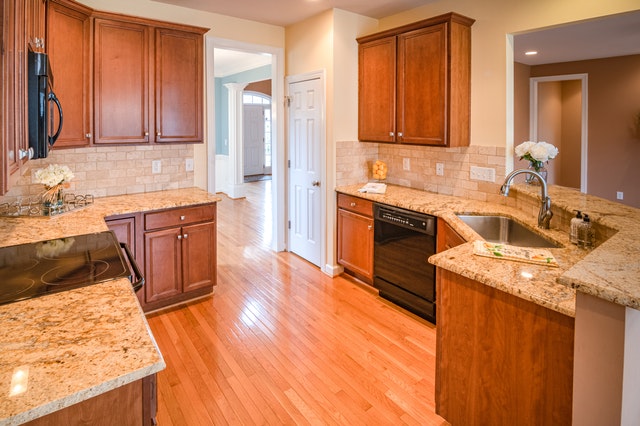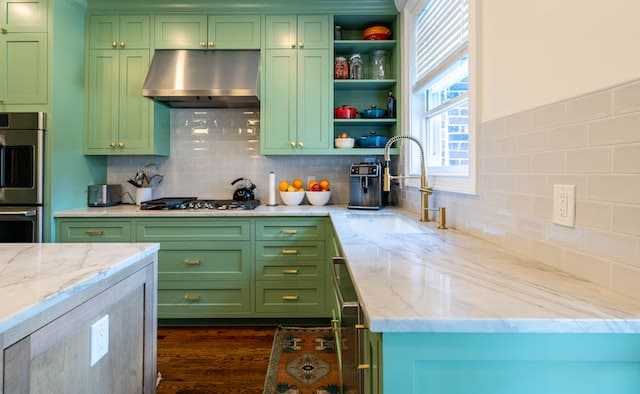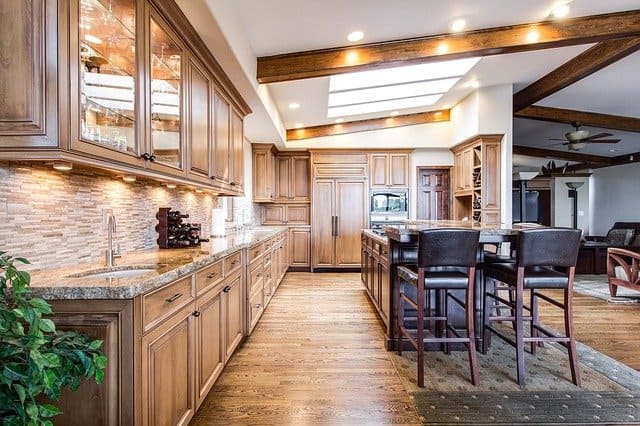This is an excerpt from the Book called “NEW KITCHEN IDEAS THAT WORK ” by JAMIE GOLD. Continue reading to learn more about Cabinets, thanks to the author.
“Green” Cabinets
Some homeowners choose eco-friendly cabinets because of their sustainability. Some brands feature certification logos like Forest Stewardship Council (FSC), U.S. Green Building Council member, or Environmental Stewardship program (ESP).
As the number of certifying organization and certifications (many affiliated with trade associations) grows, so does confusion. A cabinet may be from a sustainably harvested forest that doesn’t have FSC certification. Or it may carry ESP certification meaning minimal formaldehyde emissions, but have a greater impact on the environment from being trucked across country. The important details to ask your designer or supplier if you‘re concerned about sustainability include the following:
- Where are the cabinets made and how will they be transported to my job site?
- Are they from a sustainable or renewable source?
- Do their materials of processes harm the environment?
- Can they be recycled in the future if I wish to remodel?

If you or your family members have serious health issues, look for eco-friendly cabinets that are “healthier” than others. These include the following:
- Cabinets that exceed international air-quality standards for low or no VOCs (volatile organic compounds). This typically means they use water-based stains and paints.
- Construction from plywood, particleboard, and MDF that has no urea formaldehyde. This, too, is to eliminate dangerous offgassing.
- Assembly with nontoxic, no-or low-VOC adhesives.
Wood-Species Characteristics
Too often, homeowners select wood cabinets without considering their natural characteristics. Wood, like the trees it came from, is not uniform or perfect. Its beauty lies in its flaws and variations Understanding what is characteristic of each species will help you choose wisely for your home. These are the most widely available.
MAPLE
This relatively even wood typically has a straight, subtle grain, and it can run yellow or pink. It is prone to mineral streaks, which look like dark birth marks on its surface. It stains and paints evenly. In fact, most painted kitchen cabinet use maple as their base.
BIRCH
Like maple, birch has straight, even grain and golden tones. It is sometimes used as a more affordable substitute for maple.
CHERRY
Cherry has dramatic grain variations and contrasts. It is not uncommon to see strawberry blonde tones blending with darker reds in cherry cabinetry. Cherry is also prone to darkening over time with exposure to sunlight, it is a hardwood, but softer than oak or maple.
ALDER
Cabinets made from alder have reddish-gold stones, but these are less dramatic in their contrasts and variations than cherry. It is sometimes used as a more custom cabinet projects. Its softness makes it a popular choice for distressed styles, too.
OAK
The classic oak cabinet has a very strong open grain that offers light-dark contrast and cathedral-like detail. Oak can be rift-curt or quarter sawn for a more even appearance and elimination of the cathedral style that some people dislike. This variation generally costs considerably more than standard oak and is rarely available in stock cabinet lines.
HICKORY
This is a nature lover’s wood, with its extreme color contrasts and open grain. Although extremely hard, hickory is prone to mineral streaks, bird pecks, and other evidence of its past life as a tree.

The New Laminates
When many of us think of laminate cabinets, we picture low-quality, unattractive imitations of natural products peeling off of particleboard rd doors. In the post-World War II building boom, laminates got a bad name, and it’s not uncommon to see these hastily constructed cabinets torn out in remodels.
Newer laminates are largely European in origin but have become increasingly available in the United States and Canada as contemporary cabinet styles grow in appeal. There is no single characteristic of these highly original surfaces; what unites the best of them is their dramatic finish that pays homage to a beloved material without trying too hard to replicate it. Laminate cabinets can bring the look of a premium wood to your kitchen without the premium price tag-or rainforest impact-but can’t be refinished or even easily repaired, if damaged. Better materials, manufacturing processes, and adhesives in these man-made products have made them more durable than in their early years, though. They’re better looking now, too.
These new laminate offerings are even more varied than their painted and wood-grain counterparts. Laminates can have any of the following:
- A strong texture that adds a dimensional element to the kitchen beyond color and pattern.
- A translucent glass-like sheen that adds a unique high-gloss element.
- Continuous, book-matched finishes inspired by exotic woods that are otherwise out of budget or largely unavailable. Boook matching is the cabinetry equivalent of a dress whose pattern extends perfectly across seams.
- Some manufacturers combine two laminates in one cabinet-often solid finishes paired with wood grains-for an artistic, furniture-style design that likely won’t be found at the house down the street.

The owners of this 1920s Italianate Arts and Crafts home in British Columbia, Canada, love historic European architecture and wanted to incorporate its style into their kitchen remodel. At the same time, the space needed a serious modernization.
There was no cooking ventilation to pair with the new Aga range, for instance, and the old-word floor plan chopped up the space in ways that didn’t work for the homeowners’ lifestyle. They remodeled their kitchen to meet their current and future needs nut also to honor the historic style they so greatly respect.
The red Age served as the inspiration for the stained red cabinetry and beadboard backsplash. The creamy finish on the perimeter cabinets lets the red accents be the star. The simple, traditional door styles and similarly styled moldings and decorative detail shared by both unify the space.
A subtle diamond theme shows up in both the white cabinet’s lattice uppers and the red cabinet’s leaded-glass doors. There are also chunky brackets and toe kick comers that appear in both the red and white sections. All of these individual details add up to a space that’s vibrant, vintage, and playfully pulled together.

